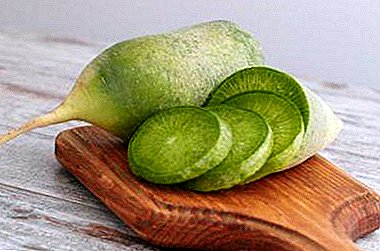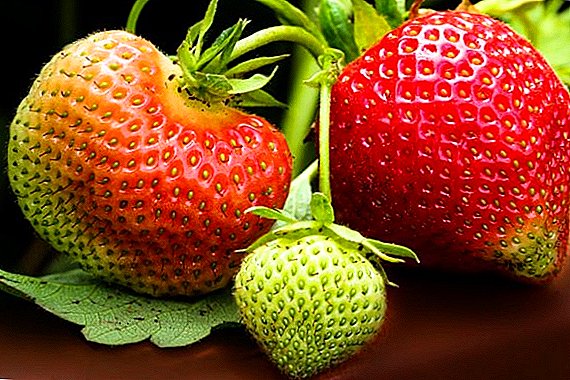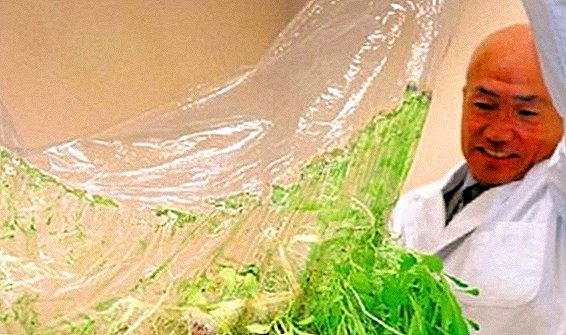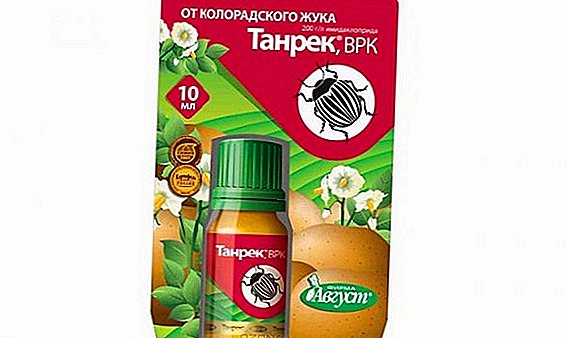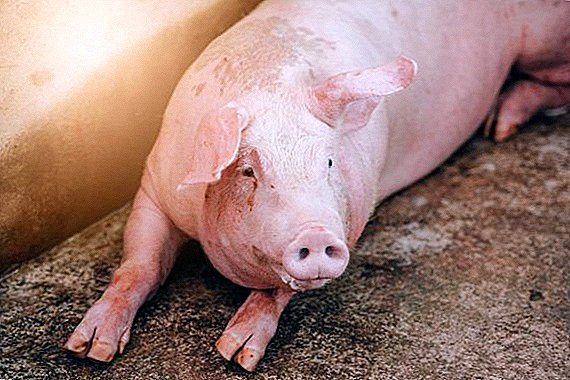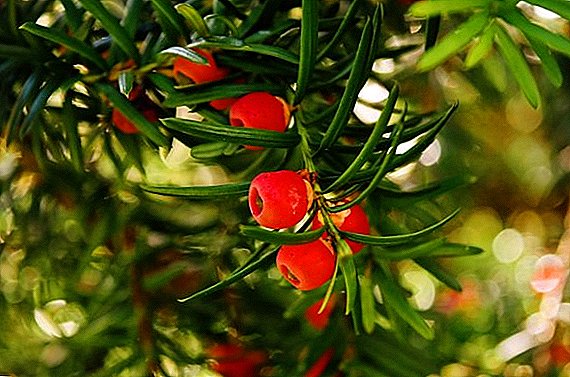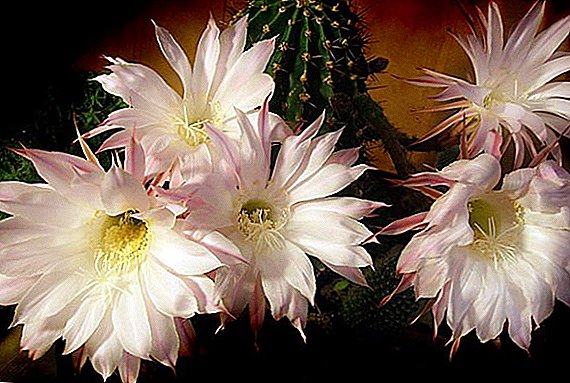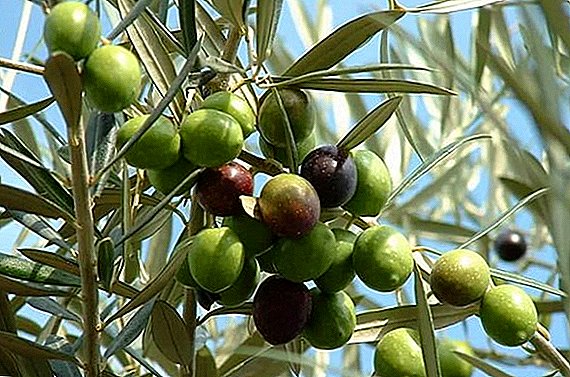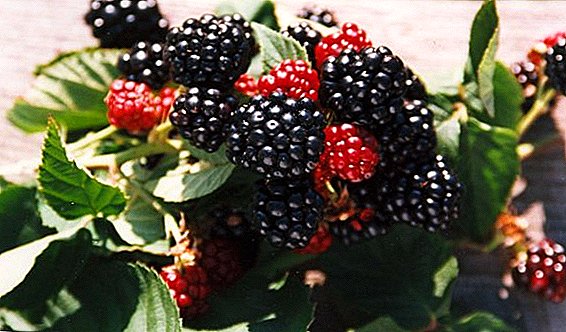 Breeders have bred hybrid blackberry species, one of which ballless mid-late variety Chester Thornless. It stands out among others with a higher resistance to a sharp cooling, as well as excellent taste. Blackberry Chester Thornless fell in love with gardeners for the lack of thorns and large berries.
Breeders have bred hybrid blackberry species, one of which ballless mid-late variety Chester Thornless. It stands out among others with a higher resistance to a sharp cooling, as well as excellent taste. Blackberry Chester Thornless fell in love with gardeners for the lack of thorns and large berries.
Chester Thornless variety blackberry description
 In the seventies of the last century in the American laboratory of the state of Maryland, the blackberry variety Chester Thornless was bred. It turned out by hybridization of varieties Darrow (erect) and Tornfri (semi-inhabiting). As a result, a large, branchy shrub with densely formed berry tassels was obtained.
In the seventies of the last century in the American laboratory of the state of Maryland, the blackberry variety Chester Thornless was bred. It turned out by hybridization of varieties Darrow (erect) and Tornfri (semi-inhabiting). As a result, a large, branchy shrub with densely formed berry tassels was obtained.
The shoots of this blackberry variety are semi-settling or semi-upright, have a light brown color, have good flexibility and reach a height of three meters. Bushes - strong and powerful. After a period of berry formation, the stems dry out. In each two-year period, the above-ground part of the shrub is fully updated.
The leaves of Chester Thornless are trifoliate and arranged in a sequential order. Their color is dark green. At the base, fruiting buds are formed, from which buds are formed. In the summer, white and pinkish flowers appear from them, which later form in brushes with dozens of juicy and large fruits. This happens in early August.
By the time of full ripening, the berries become shiny black. Each fruit grows to three centimeters and weighs about eight grams.
 Blackberry Chester Thornless is perfectly adapted for storage and transportation. It stands out against the background of Tornfri sour-sweet taste of its berries. Fruits will also be liked by those who follow a dietary diet, as they are excellent for this purpose.
Blackberry Chester Thornless is perfectly adapted for storage and transportation. It stands out against the background of Tornfri sour-sweet taste of its berries. Fruits will also be liked by those who follow a dietary diet, as they are excellent for this purpose.
This variety of blackberry can be consumed by people with impaired carbohydrate metabolism, and those who suffer from disorders of the gastrointestinal tract.
Did you know? Blackberry is considered the birthplace of the United States of America. There, this shrub grows in almost every summer cottage and backyard. It was brought to Europe only in the 18th century.
Pros and cons of Chester Thornless
This shrub grows without problems and bears fruit throughout Ukraine and most other European countries. They are easily tolerated wet and warm winters. The frost resistance of the blackberry Chester Thornless is also above all praise. In areas with temperatures reaching -30 ° C, it is enough to take standard snow cover measures.
Advantages:
- Excellent frost resistance.
- High yield.
- Good drought tolerance due to a highly developed root system, which is deep enough.
- Valuable dietary product.
- Berries do not lose their presentation during long-term transportation.
- Decorative appearance.
Disadvantages:
- At very low temperatures, it is recommended to insulate blackberries, despite the high frost-resistant qualities.
- The plant is little adapted to the closed and shaded spaces. It is also not recommended to plant it in lowlands and ravines.

Planting Blackberry Seedlings Chester Thornless
The development cycle of blackberry shoots is similar to raspberries and is two years. In the first year of life, their growth and budding takes place. On the second - fruiting and further dying off.
Blackberry Chester Thornless blooms later and begins in June, but this is a big plus, because the flowers are not exposed to spring frosts, and the ripening of berries is annual and abundant.
Selection and preparation of planting material
Seedlings can be taken with a closed root system, and with an open. The main condition is sufficient development of the roots. When buying planting material, find out the characteristics of the variety - this is very important for further planting and proper care of the bushes.
Take planting material, which is one or two years old, only in farms or nurseries. Only there the planting material and uterine plants are assessed and activated by specialists of variety and phytosanitary status.
 Inspect seedlings when buying. Sprouts must be without leaves, not damaged or dry. They should not be visible even the slightest signs of disease and the presence of pests on the shoots and roots.
Inspect seedlings when buying. Sprouts must be without leaves, not damaged or dry. They should not be visible even the slightest signs of disease and the presence of pests on the shoots and roots.
Optimal seedlings are tested to the following standards:
- Two or three main skeletal roots.
- The root system is not shorter than 15 cm.
- One main escape.
- Elevated part not less than 40 cm.
Site selection and preparation for landing
Choosing a place for planting blackberry Chester Thornless, follow the characteristic features of the shrub - it is a light-loving plant, so fruiting will be at the highest level only in the sun or in partial shade.
If there is a lack of light, blackberry berries will be smaller and lose their taste. Under such conditions of growing, young shoots will grow upwards, closing fruitful branches from the sun. The formation of shoots can occur until late autumn, which adversely affects the frost resistance of the shrub.
 Chester Thornless does not tolerate overwetted soils, so you can not plant it in areas that are regularly flooded with rain or melt water. Blackberry planting Chester Thornless should be planted in soils where the groundwater level is at least one meter. Otherwise, the plant simply will not survive.
Chester Thornless does not tolerate overwetted soils, so you can not plant it in areas that are regularly flooded with rain or melt water. Blackberry planting Chester Thornless should be planted in soils where the groundwater level is at least one meter. Otherwise, the plant simply will not survive.
Important! Add the fact that the blackberry is best suited to loamy soils and does not tolerate carbonate. But here everything will depend on how large your summer cottage is. It is unlikely that it will be divided into different types of soil. Basically, the composition in all its points will be identical and you will have to convert the soil to the most comfortable conditions for growing Chester Thornless.
Choosing a place for planting this variety of blackberry, you can not worry about protection from frost and cold winds, as Chester Thornless is a very winter-hardy variety. Shrubs are better planted with small islands in the center of the garden area, although many do the opposite, placing bushes along the perimeter along the fence.

In this case, it is better to move one meter back from the fence, so that the blackberry is less shaded, and it would be more convenient for you to pick up berries later. Improved access to shrubs on both sides will not only facilitate harvesting, but also care for blackberries.
Did you know? Our ancestors called the blackberry "hedgehog-berry", because on the stems it has a lot of thorny thorns.
Stepwise landing process
Agrotechnika growing blackberries includes several fundamental points. It is better to start planting blackberries in early spring, although you can postpone it until autumn. Only in this case, the above-ground part should be shortened almost by half, and also well covered for the winter so that the young shoots do not freeze and the plant does not die.
But soil preparation should be carried out in the autumn, in order to plant blackberries in the spring. The plot chosen for planting should be dug up to a depth of half a meter and fertilizers of mineral and organic type should be added.
For 1 m² you need to prepare 50 g of potash-based fertilizers, 100 g of superphosphate and 10 kg of compost. If the site consists preferably of clayey soil, peat and sand should be added to it.
 Blackberries should be planted in trenches or pits measuring 40 cm ³. They should be placed at a distance of 50 cm or 1 m from each other. Depending on future future formation. But since Chester Thornless is a massive shrub, make more gaps. In the pits place fertile land, filling them in 2/3.
Blackberries should be planted in trenches or pits measuring 40 cm ³. They should be placed at a distance of 50 cm or 1 m from each other. Depending on future future formation. But since Chester Thornless is a massive shrub, make more gaps. In the pits place fertile land, filling them in 2/3.
If the preliminary soil preparation was not carried out in the autumn, it is never too late to do it later. Fertilizers mix thoroughly with the ground in the pits to minimize contact with the root system of seedlings.
Place the seedlings in the hole so that the varietal bud, which is located at the base of the stem, is not more than 3 cm deep. If you deepen it much, you risk postponing the blackberry fruiting for a whole year, as you will have to wait for new buds to form closer to surface.
Important! In order to catch rain and irrigation water better, make holes around blackberry saplings. Tumble the soil with a small layer of humus, bursting sawdust or peat mixture. Do it every spring.When planting a blackberry, remember that it "pursues aggressive targets." To prevent the plant from sticking into areas that are not intended for it, dig slate sheets along the strip. This needs to be done not only from other cultures, but also from the fence, because the neighbors may not like such an “invasion”.
 Blackberry shoots Chester Thornless grow tall and brush berries abundant and large, so the bushes need something to prop up. The easiest thing to do next to each shrub is to drive a peg and tie branches to it.
Blackberry shoots Chester Thornless grow tall and brush berries abundant and large, so the bushes need something to prop up. The easiest thing to do next to each shrub is to drive a peg and tie branches to it.
If you landed a blackberry with an ordinary method, then installation of a trellis will help. Dig in the posts along the edges of the rows and stretch several wires between them in half-meter steps along the height of the peg. The stems can be tied to the wires or twisted, passing between them.
Did you know? The appearance of the blackberry was a legend. Once upon a time a rich panna met a poor shepherd. Love arose between them. But fate decreed in such a way that they were forced to leave. For a long time, the girl missed her because she could not be near her lover and asked nature to give her bitter life a little to delight. And she gave her a blackberry with her sweet and sour unique flavor.
Proper care is the key to a good harvest.
Blackberry care Chester Thornless is based on the following "whales":
- Regular watering;
- Weeding;
- Soil loosening;
- Preventive and therapeutic measures to combat pests and diseases.
- Pruning and shaping bushes.
Watering and loosening the soil
Blackberry seedlings that you planted this year should be watered regularly for the first 45 days and during dry weather. During the fruiting period, the bushes need watering, when their growth is the most intense and the berries ripen.
Moisturizing the soil, do not use water from the well or cold from the tap. The best option would be to collect rainwater or tap water in a large container and let it stand in the sun for several days.
To harvest Chester Thornless was abundant and tasty, you must constantly monitor the condition of the soil on the site. If for the first couple of years between blackberry bushes it turns out to grow tilled vegetables, or those that go for fertilizer, in the third year the passages should be maintained under black steam.
 Only emerging weeds need to be eliminated, and the soil between the rows should be loosened five times per season to a depth of about 12 cm. Around the shrubs, the soil should be hacked or loosened with a fork to a depth of about 8 cm three times during the growing season.
Only emerging weeds need to be eliminated, and the soil between the rows should be loosened five times per season to a depth of about 12 cm. Around the shrubs, the soil should be hacked or loosened with a fork to a depth of about 8 cm three times during the growing season.
Important! If the area is mulched with straw, sawdust, needles or fallen leaves of the forest, the intensity of loosening and weed control procedures will automatically decrease significantly. But the mulch in the form of a five-centimeter layer of rotted manure or peat compost will provide protection from weeds and prevent the appearance of a crust on the surface of the soil. It will also be the source of the full range of nutrients for the blackberry bush.
Feeding blackberry bushes
After wintering with the onset of warm spring days, the blackberry weakens and it needs special nutrition. Therefore, a reasonable question arises: how to feed the blackberry Chester Thornless in the spring?
Ammonium nitrate or urea is applied in proportions of 20g / m². Highly organic nitrogen is applied at 4 kg per m² and only during the growing season. Potassium sulphate should be poured over 40 grams per m² plot. Sulfur fertilizers must be given to blackberries annually, but only those that do not contain chlorine.
 If the mulching of the bushes was made by compost, feed should be introduced in the form of phosphate fertilizers. If any other organic matter was introduced, then phosphates are necessary in the proportions of 50 g / m² every three years.
If the mulching of the bushes was made by compost, feed should be introduced in the form of phosphate fertilizers. If any other organic matter was introduced, then phosphates are necessary in the proportions of 50 g / m² every three years.
Important! The first two or three years after planting Chester Thornless should not be fertilized.
Support for bushes
Considering the creeping shape of the blackberry and the time-consuming process of caring for it, as well as harvesting, in large areas vertical trellis.
To build such a structure, two-meter-high columns are set at an equidistant distance of 6-10 meters from each other. Between them, the first wire is drawn at a distance of two feet from the ground, the second one - by meter, the third one - one and a half meters, and the final wire is fixed on the tops of the posts.
The first way to fix blackberries on the trellis:
Shoots need to twist between three rows of wire. All that will grow after the garter, you need to distribute on the sides of the center of the main bush. Bring them should be on the top fourth wire on top of all the other shoots.
The second way to fix blackberries on the trellis:
 Blackberry shoots are bred around and fixed in the shape of a peacock tail. The youngest and healthy shoots are attached to the topmost string. This method is good because there is a lot of free space for the shoots, they are better illuminated, and consequently, the yield of the blackberry Chester Thornless is increased significantly. Note that this method is more laborious in comparison with the first.
Blackberry shoots are bred around and fixed in the shape of a peacock tail. The youngest and healthy shoots are attached to the topmost string. This method is good because there is a lot of free space for the shoots, they are better illuminated, and consequently, the yield of the blackberry Chester Thornless is increased significantly. Note that this method is more laborious in comparison with the first.
The third way to fix blackberries on the trellis:
The shoots with the fruits are divorced on the sides of the young shoots and tied to the second or third rows of wire, which are located at a height of a meter and a half from the ground. Tie shoots need soft materials so as not to damage them, such as twine or braid.
Harvest
Blackberries often mistakenly undeservedly refuse to grow in their gardens and orchards. All the fault of the habit of early harvesting berries. Gardeners mistakenly believe that if the berries are blackened, it means that they are already suitable for consumption. But it is not so. These fruits are somewhat bitter and sour.
 To blackberry Chester Thornless surprised you with all its inherent taste, you should leave them to ripen on the branches to the end. You will understand when you need to harvest, on a gray patina on the soft black berries.
To blackberry Chester Thornless surprised you with all its inherent taste, you should leave them to ripen on the branches to the end. You will understand when you need to harvest, on a gray patina on the soft black berries.
After the harvest has been harvested, it should be immediately removed to a dark, cool place. In the sun a few minutes later the berries turn red, which means that bitterness appears and all taste qualities are lost. Also, blackberry fruits should not be stored for long ˜- they lose their taste.
Important! Harvest the entire crop, even if you are at the moment a lot. This will contribute to the fact that the next crop will be replete with even larger and juicy berries.
Pruning and shaping the berry bush
Immediately warn that blackberry trimming - It is very troublesome, but necessary for the normal development of the bush. Therefore, it should be carried out regularly. The first time to cut Chester Tornless need two years after planting in open ground. Later, you need to remove the old fruiting shoots annually.
Among other things, bushes should be cut in spring. Then too long fruiting branches with dried tops are cut off. This pruning should be done every year, leaving five fruitful shoots on the bush. This will be quite enough for the harvest to make you happy.
 Blackberry Chester Thornless can not be warmed or even covered for the winter, as it withstands temperatures up to 30 degrees, which is unusual for our climate. But the stems left for fruiting need to be shortened in the fall. They should be cut equally on the length of about one and a half meters.
Blackberry Chester Thornless can not be warmed or even covered for the winter, as it withstands temperatures up to 30 degrees, which is unusual for our climate. But the stems left for fruiting need to be shortened in the fall. They should be cut equally on the length of about one and a half meters.
This procedure is usually carried out by experienced gardeners in the spring along with tying the stems. This is convenient because they take into account the negative consequences that the winter period can bring: blackberry diseases or the extent of its damage.
Important! Stems that have not suffered frost and frozen out, should be removed completely.
 The second important point in Blackberry care is Chester Thornless. shrub formation. Blackberry stems are powerful but flexible. They need to carry out the formation, separating young shoots from fruiting.
The second important point in Blackberry care is Chester Thornless. shrub formation. Blackberry stems are powerful but flexible. They need to carry out the formation, separating young shoots from fruiting.
To give the bush the most harmonious appearance, three forms are used: fan, rope and weaving with the direction in one direction or in two opposite directions.
Blackberry young shoots should be guided carefully along the post. A shrub should not grow chaotically wherever it pleases, so it must immediately be guided and redirected. After the growing season, the weak tops of the stems are removed.
In the second year of growth, Chester Thornless bears fruit. On the side processes there is a formation and further appearance of the berries. After starting to appear additional shoots, which also need to be sent to the sides or up.
After the crop is harvested, the main shoots are cut off, leaving new ones in their place. They also remove the weak tops. This happens all subsequent time every year.
Did you know? There is one popular belief: after September 29, it is impossible to collect blackberries, as it is dangerous to health. Allegedly then the leaves of the berries marks the devil.
Blackberry breeding methods by Chester Thornless
Blackberry Chester Thornless breeds in two ways:
- Pinning the apical shoot. With this method, the tip is separated and transplanted separately in the second half of summer.
- Reproduction green cuttings. Also produced in July. The upper part of the stem with one kidney must be cut off and placed in a solution of indolylbutyric acid. Then for a month to plant in a pot, creating greenhouse conditions for him. After a full-fledged root system is formed, the plant can already be planted in the ground.
How to prepare the blackberry Chester Thornless for winter?
As we have said, this variety of blackberry tolerates frost well. And if in your area they do not exceed 30 degrees, you can not take any measures to shelter and insulation. But if you want to play it safe or the temperature outside the window drops really low, we will tell you what measures need to be taken.
After pruning, untie the branches from the trellis, lay on the ground and cover with leaves of corn. Put a covering material on top - a plastic film, for example. Blackberry under the shelter does not vyperevaet, so you can safely use hay, humus, sawdust or straw.
Do not cover the fallen leaves from fruit trees, as they can hide various diseases, microorganisms and transmit unwanted pests. Dried blackberry foliage, which fell in the fall, also need to be raked up in a separate pile and burned.


